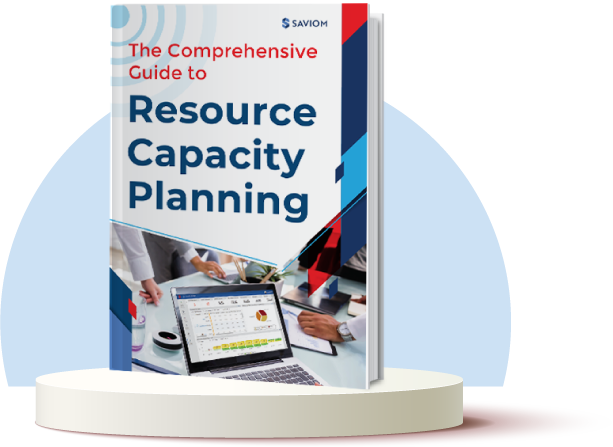The advent of technological advancements and cost pressure due to increased globalization has resulted in hybrid work models across the business landscape. Now that we are moving into the post-pandemic era, this adoption rate has grown exponentially. In fact, even employees are embracing this model due to its increased flexibility.
A survey of 9,000 workers by Accenture shows that 83% of employees prefer to work in a hybrid team model.
Apart from work flexibility, the hybrid team model offers myriad benefits, such as access to worldwide talent, reduced resourcing costs, decreased real-estate overheads, and so on.
However, managing a hybrid team also brings forward a new set of challenges that did not persist in a traditional office environment, for example, persistent time zone differences, cultural gaps, absence of in-person communication, and more. These challenges can have a catastrophic effect on projects progress if not addressed diligently.
Thus, project managers must equip themselves with a judicious mix of technical and soft skills to effectively combat these challenges and manage a hybrid team.
This article highlights the significant challenges of managing a hybrid team and best practices to overcome them.


However, before we go further, let us understand what makes a hybrid team.
What is a hybrid team?
A hybrid team consists of a workforce that is working from multiple locations across the globe. At the same time, some employees could be working in co-located offices, and some will be working from home, and the team can be a combination of both full-time and part-time resources.
The hybrid team setup has been a part of the business landscape for a long time. However, not every firm or organization was open to the idea of a blended work environment. In the post-COVID era, even reluctant businesses have started embracing the hybrid model as they slowly transitioned to normalcy.
In addition, workers themselves have mixed opinions about returning to the office.
For example, 59% of workers in the U.S. have said that they would prefer to work from home, and the remaining 41% want to return to the office, reports Gallup.
Hybrid teams have quickly emerged as a well-preferred solution for many organizations. Let us understand why.
Read More: 9 Effective Tips on Enhancing Employee Performance at Work
What is the significance of a hybrid team?
As mentioned earlier, the hybrid model gained popularity because it offers multiple benefits to employees and the organization.
From the employees’ standpoint, it provides them the liberty of choosing their place of work. They can either work entirely from home or office or choose a middle ground and visit the office on certain days of the week. This way, they can strike the perfect work-life balance. For example, working mothers can stay at home to cater to their infants, and specially challenged employees can work at ease in their home offices.
As for the project-led business environment, it allows the managers to recruit talent from across the globe. Furthermore, since geographical borders are not an issue in a hybrid team, organizations can also seek cost-effective global resources without compromising the quality. Such measures allow them to keep project costs low and eliminate administrative overheads while maintaining quality.
At the same time, when employees can form a synergy between work and life, they are more productive and engaged. This allows them to work better towards the project goals and eventually elevate its quality. In addition, it will further enhance client satisfaction, thereby increasing profitability.
Overall, a hybrid work model is a feasible solution for organizations as it provides umpteen benefits in terms of employee retention, satisfaction and also helps in maintaining the competitive edge.
Now let’s look into some of the roadblocks project managers face while handling a hybrid team.
Challenges faced by project managers while managing a hybrid team
As discussed earlier, the challenges in a hybrid team are much more complex because project managers have to handle employees from different departments, remote locations, various backgrounds, and so on. All these challenges have a direct impact on the project’s constraints and can deteriorate its quality.
Here is a list of the most pertinent ones:
Communication gaps between hybrid teams
Effective communication is the driving factor behind every project’s success. However, communication gaps may occur within a team when the members are dispersed across boundaries.
Due to the communication barrier, the project manager may not get real-time updates from, particularly remote working or part-time employees. So, if there are discrepancies in the project tasks, managers will be unable to take timely action, which can lead to project delays and, in worse cases, derail it. Moreover, team members may sometimes fail to understand the project objectives and interdependencies clearly, which will disturb the project’s flow and the team’s overall synergy.
Inaccurate resource scheduling due to time zone differences
Accurate resource scheduling is imperative to ensure that the right resource is working on the right task and not over or under-worked. It’s relatively simpler to schedule resources when they are present in the co-located office spaces. Managers can simply nudge them at their desks and understand their timelines. However, it becomes a challenge when employees are spread across boundaries and different time zones.
In some instances, time zone differences can be as significant as 10 or 11 hours. If managers don’t have the visibility of employees’ location, it can create confusion regarding the project deadlines, which may cause the project timeline to suffer. At the same time, the hybrid team can have a part-time resource working only on certain days. If managers aren’t aware who is a part-timer and end up scheduling them time-sensitive tasks considering they are full-time workers, it will also lead to potential delays.
Read More: Eight Signs That You Need Better Resource Scheduling
Ambiguity in roles and responsibilities of a hybrid team
Project managers need to establish the roles and expectations from their team members clearly before the project’s onset. However, it becomes difficult for them because they have to manage multiple units, which are geographically dispersed. Therefore, the workers start feeling disengaged as they lack a sense of purpose and aren’t aware of their contribution towards the end goal. This can lower productivity, eventually impacting the team’s effectiveness.
Employees of a hybrid team working in a matrix structure will face further ambiguity in understanding their roles since they have multiple reporting lines. This can cause a deviation in their work and expected output, further deteriorating the project quality.
Ineffective collaboration due to geographic boundaries
In a hybrid model, ineffective collaboration can lead to information silos, delays in meeting deadlines, and affect the employees’ productivity. Furthermore, when there are no streamlined modes of collaboration in place, the hybrid team employees might not be on the same page, as exchanging information will become arduous.
Since some hybrid team members are working remotely, project managers could also have difficulty gauging the progress of a project when they don’t receive the necessary updates or files on time. As a result, there will be numerous bottlenecks, cost overruns, and project delays.
Read More: 11 Ways to Improve Cross-Departmental Collaboration
Lack of real-time updates on project metrics
Project metrics help the project managers determine the progress of a project. When some employees work from the office while the rest work from their homes, having real-time updates on project metrics can be a significant challenge for the project managers. Additionally, it will add to the problem if the managers don’t equip the right tool to receive these real-time data-driven insights.
The project managers will not be aware of the project’s status, whether it is leading or lagging, and will be unable to mitigate potential risks proactively. The resources could also be under-utilized or overutilized, and the completion of the project could take more time than what was initially forecasted. Similarly, if the project budget goes beyond the planned value at any stage and the manager does not get forewarned, it can bring the project to a halt.
Inadequate technology infrastructure for the dispersed team
Hybrid teams are heavily dependent upon modern technologies. However, the absence of adequate software and hardware that compliments a hybrid work setup can affect the employees’ productivity. For example, outdated tools and slow internet speeds could become a significant roadblock for both the project manager and the team members.
If the remote workers and the employees in the office cannot connect seamlessly, there will be project delays and multiple disparities all around the project. In addition, inadequate technology would make it difficult for the project manager to make accurate data-driven decisions. Instead, they would have to rely on guesses and estimations.
Read More: 5 Top Project Metrics You Need to Use Today
To tackle these challenges, managers must first equip skills to manage a hybrid team. Here are some ways:
How to effectively manage a hybrid team?
Project managers possess numerous skills that help them do justice to their roles and responsibilities. A hybrid work structure brings challenges that managers have to maneuver to get the best results effectively. These are some of the ways that make managing a hybrid team easier.
Establish clear expectations with all the team members
Project managers should convey the expectations clearly to the individual members of the hybrid team. It helps the employees explicitly understand what roles they must fulfill and how their work can be instrumental in successful project delivery. It keeps them motivated towards the end goal and enhances their productivity.
Identifying the responsibilities also improves accountability and increases efficiency. Thus, managers can formulate a plan to bring all the hybrid team workers together at a specific time that fits everyone’s schedule to deal with the time-zone differences.
Develop an efficient resource plan for the hybrid workforce
Managers should stay mindful of the differences in time zones of a hybrid team. The working hours of part-time resources and employees’ remote working capabilities also have to be accurately measured before creating a resource plan. An efficient resource plan ensures that employees are not over/underutilized.
Managers should check the availability of a resource before they form the resource schedules. They can even optimize the schedule by using methods like leveling or smoothing if required. They can perform all these activities on a single platform using a resource management solution. It provides unmatched visibility into the enterprise-wide resource pool and its varied attributes. As a result, managers can allocate the best fit resources, forecast, and optimize efficient utilization for successful project delivery.
Read More: What is Resource Planning, and Why is it Important in Project Management?
Facilitate flexible working hours for hybrid teams
Productivity is not counted by the number of hours logged in by employees. Instead, it is assessed based on work done in those stipulated hours. One of the significant benefits of adopting a hybrid work model is work flexibility and more autonomy. Thus, managers must encourage employees to leverage this benefit by fostering trust and sharing accountability.
This practice instills confidence in employees and encourages them to do the job with better responsibility. It enhances productivity, and in turn, ensures project quality without deviating from the deadline. By doing so, project team members can perform to their highest possible standards while maintaining a healthy work-life balance.
Increase productivity with insights into resource metrics
The project manager is responsible for maintaining the project on its course by sticking to the stipulated budget and deadline. It is only possible when they can oversee every resource’s progress. Implementing a resource management tool can enable managers to procure real-time information on various resource-related metrics that help decide a project’s success.
The tool will enable the managers to gain a birds’ eye view of the projects and tasks where the resources are engaged, regardless of their location. They can then identify the employees who are spending more or less time on tasks than planned and proactively take the corrective measures and increase productivity.
Formalize collaboration and communication policies for a hybrid workforce
Organizations need to formulate policies to ascertain the smooth functioning of the hybrid teams. For remote, part-time, and full-time employees, collaboration is performed via various cloud-based applications. Project managers can determine specific time frames when the employees should be available for stand-up meetings or scrums, regardless of their geographical differences or part-time nature.
Managers and team members should also know when to use synchronous and asynchronous modes of communication. It will help minimize unnecessary meeting hours. Furthermore, having a standardized code of conduct for various forms of collaboration eliminates the chances of misdemeanors.
With these tips, investing in the right resource management tool can enable project managers to achieve the added layer of efficiency while managing hybrid teams. Let us see how.
Read More: Why Project Communication Skills are Important and How to Master Them?
How will a project resource management tool help to manage a hybrid team?
The hybrid work environment is here to stay. Hence, organizations and project managers need to take the help of a project resource management tool that provides 360-degree visibility of all their projects and resource pool. As discussed earlier, the tool offers data-driven and accurate insights into the resource metrics, from availability to utilization.
Project managers can also use the tool to ensure the resource schedules are optimized based on their availability. The forecast versus actual feature allows the managers to gauge how much time resources spend upon a specific task. For example, the tool will show if a resource is assigned 10 hours on a project but takes 15 hours to finish it. Then the project manager can get involved and clarify why the project is taking longer than usual.
The resource management tool also enables managers to raise an automated request for a resource. Thus, project managers will not have to engage in endless loops of emails with resource managers to acquire the right resource. Instead, the tool will facilitate seamless allocation of resources and also maintain an audit trail to prevent power conflicts.
The collaboration feature within the tool provides a platform where all hybrid team members can be aware of the project’s progress and get daily updates. All these features collectively ensure that the team is working seamlessly despite being dispersed across geographies.
Read More: Project Resource Management: An Ultimate Guide on How to Master it
Conclusion- Additional tips for managing a hybrid team
Here is some of the additional information that comes in handy while managing a hybrid workforce.
- Ensure all employees are treated equally.
- Maintain a core group of employees who will visit the office regularly.
- Check Government guidelines before opening up the office to the workforce.
- Let employees choose the mode of working that suits them best. But at the same time, establish some ground rules about stringency in meeting deadlines, etc.
- Keep remote employees updated about changes in company policies.
- Take care of the employee’s mental health and well-being.
- Maintain social distancing and hygienic measures at the office.
- Organize team-building activities that bring all team members together on one platform and keep them connected.
- Equip the right tool inventory for seamless day-to-day operations.









